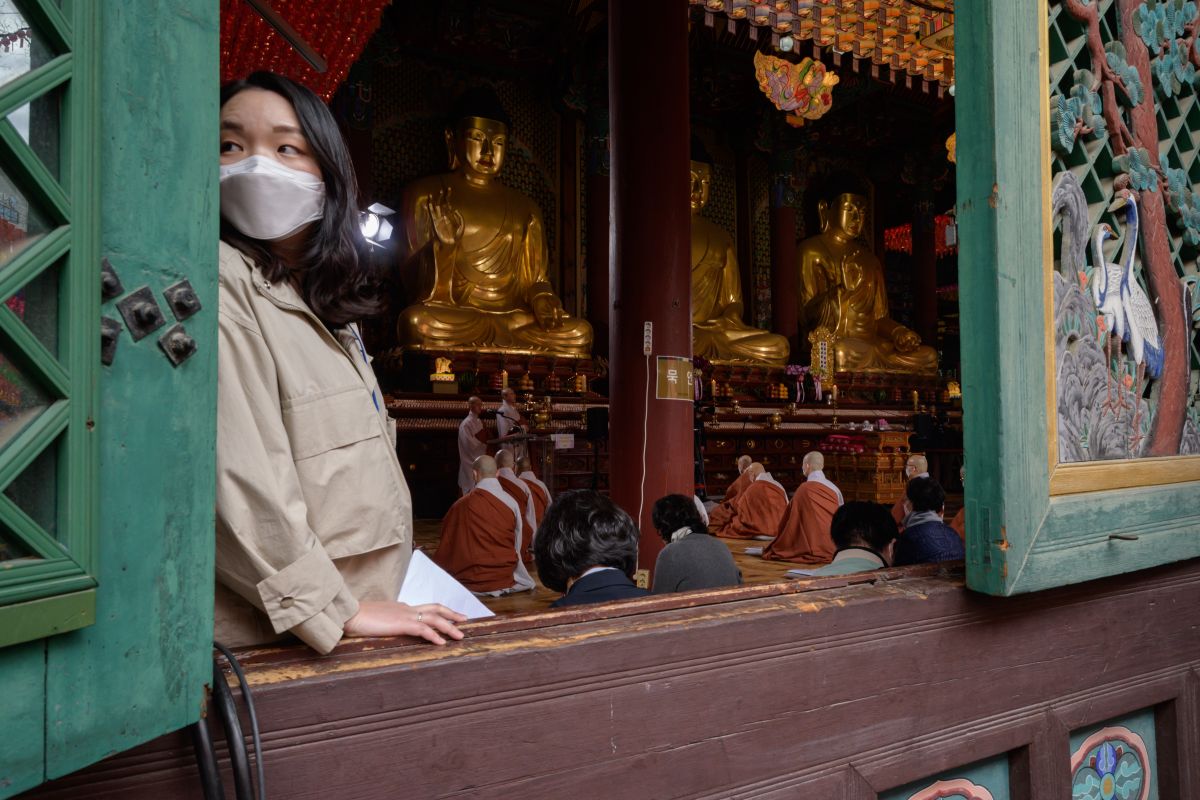“We want our country back. We’re not going to be wearing masks forever,” Donald Trump said in end-March when asked whether Americans would be asked to wear masks en masse as the coronavirus pandemic ravages the country. Such social stigma about wearing masks is common in the Western world – they are not comfortable with masks in their day-to-day lives. However, the tiny surgical aids called facemasks are now widely advocated to stop the contraction and spread of coronavirus, we know.
And Trump must have implied that a masked country couldn’t be their country. Also, the UK government has been quite adamant that there’s not enough evidence to make facemasks mandatory. However, East Asia has been different for years! The history of covering faces in China is quite old – even in thirteenth century, court servants used to cover their noses and mouths with a silk cloth when bringing food to the emperor.
And the history of widespread use of facemasks during epidemics is more than a century old. During a 1910 pneumonic plague in Manchuria, Dr Wu Lien-teh, a Cambridge-educated Malayan-Chinese doctor, recognised that the healthy people were infected through droplets from those who were sick, and he promoted the use of specially manufactured gauze masks among Chinese and foreign medical staff during the epidemic, and also among patients and suspects.
The masks proved to be effective and became ‘a marker of (China’s) medical modernity’. Soon facemasks became a part of containment and mitigation measures during epidemics. People from different corners of the globe, such as Seattle, Tokyo, Sydney, used to wear facemasks in public transport or public places during the 1918 Spanish flu pandemic. During the US mid-term election of 1918, held during that pandemic, ‘The San Francisco Chronicle’ ran photos of people queueing up to vote – all wearing masks.
It is widely called the first masked ballot in the US history. The 2020 US presidential election is all set to exhibit a similar picture, for sure. Japan’s love affair with facemasks has a century-old history which was cemented through a series of events like the Great Kanto Earthquake of 1923 and the global flu pandemic of 1934.
Japan’s obsession with social courtesy, by cough-and-cold victims seeking to avoid transmitting their germs to others, rather than healthy people looking to prevent the onset of illness made facemasks an inevitable accessory of their modern day-to-day lives. Rampant air pollution due to rapid post- World War II industrialisation in the 1950s made mask-wearing a yearround habit in Japan rather than a seasonal affectation. Even in the pre- Covid-19 world, Japanese consumers used to buy $230 million in surgical masks a year.
A Nippon.com report says that the production of facemasks for personal use rose from 500 million in 2011 to 4.4 billion in 2018. Wearing facemasks thus became a symbol and a tool of protection and solidarity. And, interestingly, facemasks are often used as fashion accessories in Japan – Japanese women mask their faces on days when they don’t have time to put on makeup. Facemasks are even used in social anxiety – some Japanese wear masks as a way to add a degree of separation between society and themselves as well.
Also, masking became a powerful tool in the age of contagion. In the backdrop of the SARS epidemic, a research article by a group of Chinese scientists, published in the scientific journal ‘Emerging Infectious Diseases’ in 2004, reported a finding that “persons who always wore masks had a 70 per cent lower risk of being diagnosed with clinical SARS compared with those who never wore masks, and persons with intermittent mask use had a 60 per cent lower risk.”
During this coronavirus outbreak, while neighbouring Austria, the Czech Republic and Slovakia were quick to impose facemask requirements, Germany intially stopped short of making them compulsory, instead “requesting” and “strongly recommending” their use. The first German city to make facemasks compulsory in public on 31 March was Jena in the former communist east, and that has recorded no new coronavirus infections in eight days while surrounding cities continued to see a rise.
Such an evidence may look encouraging though not conclusive. Japan’s growing mask-wearing habits overlapped with similar trends in other parts of East Asia in the twenty- first century mostly due to the 2002- 03 SARS epidemic that severely hit that part of the world. In today’s China, high-tech facemasks have become a norm in major cities to combat pollution. In Taiwan also, people use masks due to increasing pollution and to save themselves from smog. However, facemasks have become a street scene in Taipei and other major cities since the SARS outbreak, which was really a ‘turning point’ in this context.
The same is true in Hong Kong and Singapore also. In the Philippines, motorcycle riders wear masks to deflect vehicular exhausts in heavy traffic. And, in Hong Kong, masks are not only used in epidemic crises or to protect from pollution; these were strikingly used during the recent Hong Kong unrest by the defiant crowds to hide people’s identities.
Facemasks have been extensively used in South Korea also. In fact, some prefer to see the tradition of masking culture in countries like China, Japan and South Korea broadly as an influence of Taoism and the health precepts of Traditional Chinese Medicine. The philosophical and cultural practices of Taoism, Shinto, and Buddhism, widely practiced across Japan, China, South Korea and Thailand, stress the importance of breathing techniques as a way of maintaining health and happiness, and facemasks might help to ensure additional cleanliness of the breathed air.
The stigma about wearing facemasks continued in the Western countries until the beginning of 2020, despite earlier pandemics and growing pollution. The culture of wearing facemasks, however, spread in some parts of India during the last few years, especially in the northern part of the country, mostly due to severe air pollution.
Even cricketers of a neighbouring country took to the field wearing masks at the Ferozshah Kotla in Delhi! Trump may think that the sight of a masked America would look alien and alarming, and he may hope that would be a short-lived ordeal. However, air pollution, climate change and pandemic illness has now become a routine aspect of our global reality, and the unprecedented panic that has been generated due to coronavirus would make a huge mark in numerous aspects of our lifestyle in the post- Covid-19 world. Hence,
I would not be surprised if the masking culture changes dramatically, and people of most parts of the world continue to mask their faces ever after.
(The writer is Professor of Statistics, Indian Statistical Institute, Kolkata)












